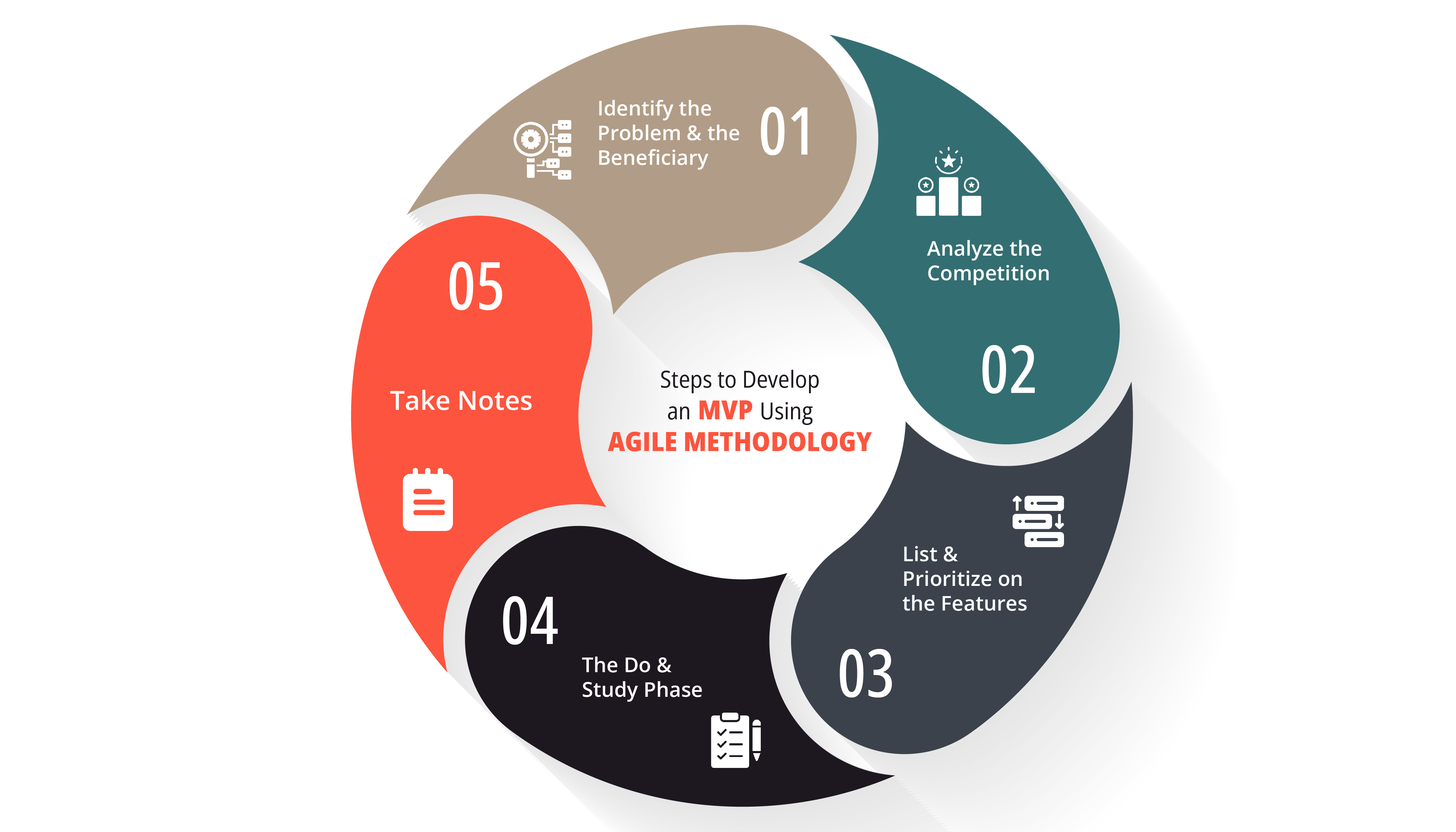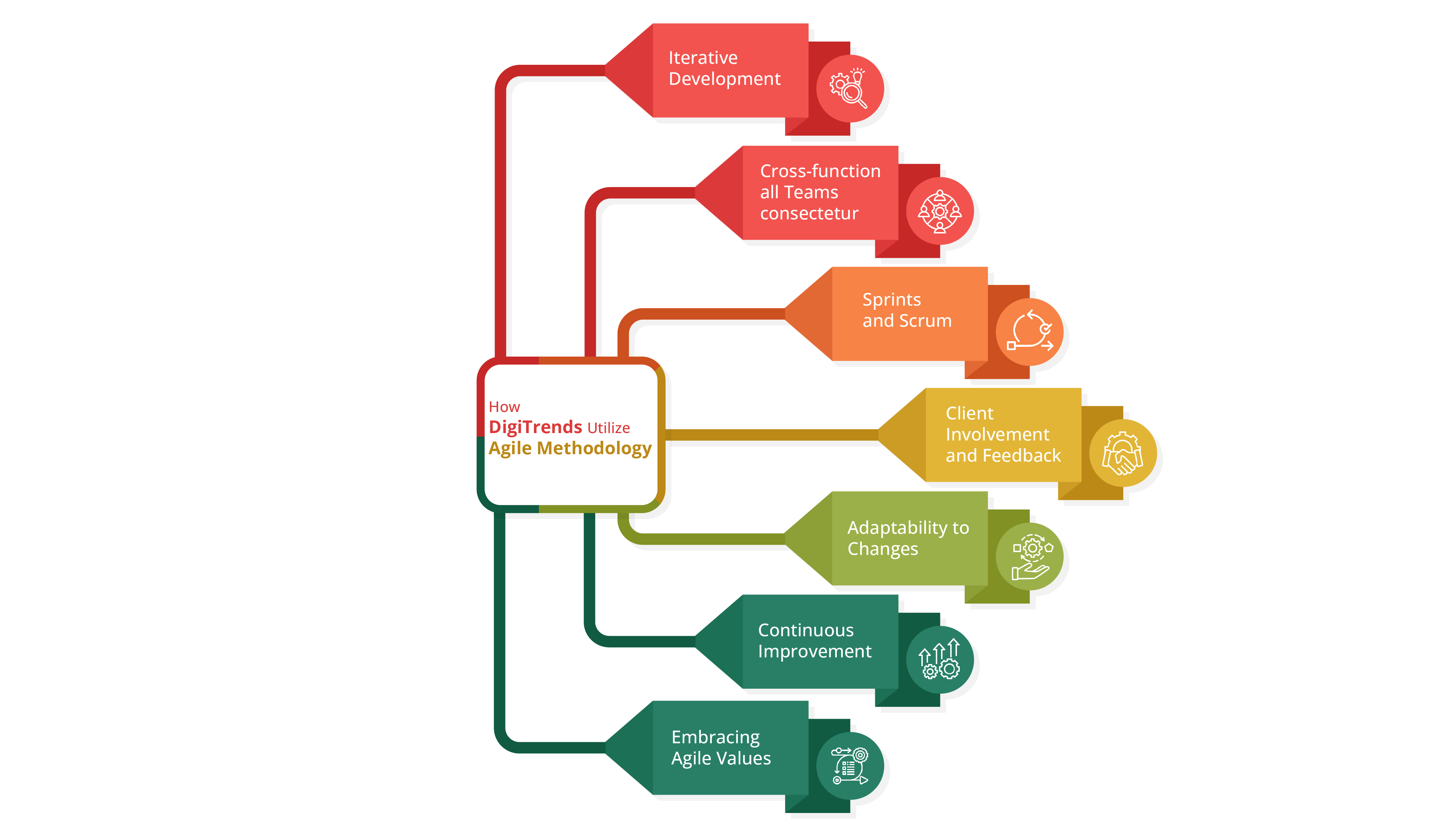How to Develop MVP Using Agile Methodology?

Suppose you have a revolutionizing idea about an app, but you are unsure whether it will work in the market. Take an example of a fitness app that uses Augmented Reality to correct posture in real-time while exercising, but you are not sure whether this app can be a hit in the fitness industry or not, or you don’t want to spend too much of your budget making the full-fledged app, so instead of developing a complete app, you develop an app that just contains the main feature; an Augmented Reality-based posture-correcting fitness app, and some essential features. This idea is what one calls a “Minimum Viable Product” or an “MVP”.
What Is An MVP
A Minimum Viable Product or MVP, is an app or software that contains just the essential features of the idea, much like a pilot testing of the application or software, so the audience gets the idea of what idea you want to convey. An MVP is beneficial for a person who has a limited budget for the development of their idea of an app or software, or a business-minded individual who wants to first test whether the app or software can work its way into the market or not. Since apps and software are of different types, there are five types of MVPs.
Smoke Test
A smoke test MVP is a research-based non-product marketing strategy to initially check whether the MVP idea is market-compatible or not, and in it, the landing page shows a demo of what the product is like without building a fully functional website. A smoke test MVP is beneficial when one needs a quick validation of their product or service while being low on budget, but it has a major drawback of the possibility of skipping critical issues of the product or service. It is useful to a person who has uncertainty about an innovative product and wants to assess the risks of the idea.
Sell-Before-You-Build-It
A sell-before-you-build-it MVP is a product development-based marketing strategy in which one sells the product before its actual launch. Its best implication is the feature of pre-orders, where a product is available to the public before its actual release. Even though it is more accurate and can be helpful in case one needs a detailed validation and risk assessment of their product or service, but has a major drawback in that one needs to deliver the product within the expected time, or else one might lose their customers.
Concierge MVP
A concierge MVP, much like the name suggests, is a one-man-do-all strategy in which one manually delivers service to a customer so that the business gains insights into the product before the actual launch. It is beneficial in case one needs deep insight into customer needs while being low on budget, but has a major drawback of the scalability due to the manual approach. A concierge MVP is useful when the business idea is complex or you have ambiguity about customer needs and preferences.
Wizard of Oz MVP
A Wizard of Oz MVP, much like the name suggests, is an MVP that is made to look like the actual product, but most of its functionalities are carried out individually. With Wizard of Oz MVP, not only do you make the end user perceive that your app or software is fully functional, but you also save a lot of money on the actual app, but you have to manually process the data. A Wizard of Oz MVP is useful when a business does not want to spend its budget on a full-fledged website but wants something close to it
Single-Feature Product MVP
A single-feature product MVP is the complete definition of what a Minimum Viable Product is. It can be defined as an MVP that is specifically launched to test only the main feature of the app or software, and since one has to launch the product, it receives better end-user engagement than all the other types of MVPs. In this MVP, a single feature is highlighted, thus getting better results on that particular feature, but considering that the product has to be launched, it is comparatively pricier than the other types of MVPs. It is best fit for companies that already have market recognition and want to launch new a product or a feature.
MVP Development through Agile Methodology
There are various methodologies one can develop a Minimum Viable Product, but the one methodology that stands out among all the other methodologies is the agile methodology. It is a project management approach in which the app or software development is broken down into phases, and the developer team accomplishes each step with progressive collaboration. The reason why Agile Methodology is the most suitable methodology for MVP development is because it blends with MVP the best, saving time and cost.
Steps to Develop an MVP Using Agile Methodology
The agile methodology is a to-the-point methodology that emphasizes straightforwardness and productivity, similarly, an MVP is a to-the-point application or software that emphasizes only the idea the presenter wants to demonstrate in the app or software. For these facts, agile methodology is the perfect method for MVP development, and certain steps need to be followed when developing MVP using agile methodology.
Identify the Problem & the Beneficiary
The first thing to do before developing any MVP, in fact before opening any startup, is to know the problem you are going to solve and whether it will attract potential customers or not. Statistics show that 90% of startups fail in their first year, it is more because of the lack of demand for the product in the market as well as the product not being simple enough for the potential consumers to use, rather than a limited budget. So to develop an MVP, one should identify the problem in the market as well as who is going to use it.
Analyze the Competition
The next step is to analyze who is going to be your competitor. Competition exists in the market and without knowing who your competitor is, you might have a tough time in the growth of your business. So to survive in the market, you need to know who your competitors are and what sets your idea apart from them.

Figure 1 Steps to develop an MVP using Agile Methodology
List & Prioritize on the Features
One of the main reasons for MVP development is to showcase a unique idea to the market, and to do so one must list and prioritize the features the idea should contain, and the easiest way to do so is to make the solutions to the problem as its features, then performing a Pareto analysis on them. For example, if the idea is to have an AR-based mobile app that lets potential consumers try an outfit virtually before buying it, the features should look like the following, starting from top-priority to least-priority features:
- Virtual try-on of an outfit in online shopping eliminates the problem of not knowing how the outfit will look before trying it.
- Size and fit recommendations eliminate the problem of finding your right fit.
- Virtually tried the outfit but still unclear whether it looks good. Share the outfit with your friends and family and get to know their opinions.
The Do & Study Phase
The next step after performing the idea’s market analysis will be to take action on the idea, and it is one of the most important phases in MVP development. This phase consists of three steps, which are build, measure, and learn, elaborated as follows:
- Build: In this step, one implements all the features into the MVP development.
- Measure: In this step, the real-time progress is measured, using KPIs and other measurement metrics.
- Learn: In this step, the results achieved in the measuring step are analyzed to know where the MVP needs improvements.
These steps are repeated until the MVP is error-free.
Take Note
The last and final step for an MVP is to take notes on what is wrong in the MVP and what has room for improvement. This is a make-or-break step for gaining loyal customers because this is what differentiates a top-tier company from a bottom-tier company.
Examples of Startups & Big Tech Firms Implementing Agile Methodology
Agile methodology development has been a trending topic for an extended time, and there are numerous startups and big tech companies that use agile methodology in MVP development. A few examples of startups and big tech companies using agile methodology for MVP development are stated as follows:
Startups
- Dropbox: Dropbox started as a simple video showcasing its main functionality i.e. file sharing. It gained quick popularity.
- Uber: Uber initially started as a black car service provider in its local area. It gained a lot of popularity.
Big Tech Companies
- Amazon: A popular buyer and vendor online store, Amazon started with agile methodology and has always been using agile methodology for software development and upgradation.
- Google: A name everyone knows about, Google always implements the agile methodology for its projects.
- Microsoft: Similar to Google, Microsoft also implements agile methodology in all its projects.
How DigiTrends Uses Agile Methodology
The reason for using agile methodology in software development, especially in MVP development is to develop software quickly and error-free, and since it is a project management technique, this is achieved by breaking the project into smaller achievable goals easier for everyone to fulfill.
At DigiTrends, Agile Methodology serves as the bedrock of software development and project management approaches. This entails breaking down projects into smaller, manageable tasks or iterations, emphasizing the delivery of functional, tested increments of software at regular intervals. Collaborative efforts among cross-functional teams, including developers, designers, and QA testers, foster open communication and collective problem-solving.

Figure 2 How DigiTrends Uses Agile Methodology
Organizing work into sprints, guided by Scrum methodologies, ensures focused efforts within short, defined periods, complemented by frequent meetings to discuss progress and plan the next steps. The adaptability to changing requirements and the embrace of Agile values such as adaptability, transparency, and continuous improvement characterize their approach, enabling them to deliver client-focused, high-quality solutions.
How DigiTrends Develops MVPs
The purpose of developing an MVP development is to create a product swiftly without errors and to do so, it needs to be developed following steps that are precise, quick, and error-free. These steps serve as building blocks for MVP development, and without them, the purpose of developing an MVP vanishes.
DigiTrends is a top-of-the-line digital agency that has expertise in MVP development, and it follows these steps thoroughly, ensuring a high-end MVP, capable enough to capture the targeted audience. These steps include performing market research for the idea, finding the root problem, mapping the MVP’s user flow, listing and prioritizing the features of MVP, launching the MVP in the market, and most importantly, practicing the ’Build, Measure, Learn’ cycle until the MVP is perfected.
Conclusion
To sum up all the aforementioned statements, an MVP is helpful for a multitude of businesses, especially startups, and when it is developed through agile methodology, not only does it save cost, but it also saves a ton of time. Hence, developing MVP using agile methodology is a vastly effective solution for businesses and startups.